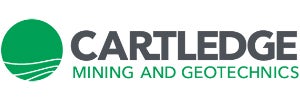Geotechnical failures can cost coal mines between $4m-$10m and it’s this reason why the Australian mining sector needs to vet risk levels more strongly and regularly, according to Engineer Kevin Li of Cartledge Mining and Geotechnics (CM&G).
LI says the industry is in dire need of a robust framework that denotes the instability or geotechnical failure events relevant to each mining project that can be diagnosed by specialists in preserving assets when compromised.
According to Li, a risk register or geotechnical hazard/failure database should be held by every mining project manager as a way of continually monitoring terrain for signs of risk.
“Every mine need this for a variety of reasons. From a financial perspective, collecting this data regularly can mean major cost savings to the amount of time needed to undertake discovery and exploration when a suspected fault, instability or failure occurs,” he said. “It’s a crucial preventative measure in managing the early effects of a hazard and providing remedy before it causes compounding issues.
“This kind of data collection tells a powerful story and can support greater education into the unique conditions of each mine site. This knowledge can extend well beyond the walls of these projects and into other mining sites and the broader sector.
“Lastly, the early identification of hazards can lead to the early mitigation of the issues and gives greater protection to the life of workers, the project, investors and the environment,” Li said.
Across the board, the industry is calling out for greater systems and processes that monitor, collect, analyse and interpret data, with Li stating that a unified approach is needed more than ever.
“Having consolidated systems that do this is important, but the responsibility and desire to do this needs to be adopted across the sector. We need to change the way we’re thinking to see beyond implementing systems and processes for our own mining projects and interests, and how we can create them to eventually talk with each other, so we all learn about the new conditions we’re exploring.”
CM&G has been pioneering a geotechnical hazard/failure framework that can be used by project managers and on-site engineers no matter the size of the business or project.
“We have developed our own process – it’s a simple, effective and replicable framework that can easily assimilate with any mining project.
“This framework, when used correctly, is not laborious and contributes to a comprehensive database which records the details of geotechnical hazards, especially slope and dump instabilities.
“Nine times out of ten, when our business is engaged to investigate a suspected hazard or slope failure, when we call for a description on what events led to the core issue, there is a lack of information or data critical to accurately determining how much impact it had or will have.
“If this information is captured initially, mining operations can make active decisions and take preventative controls to avoid worsening of conditions. This could also save money for mining projects.
“We’re committed to demystifying this. It can be done by engineers and project managers,” Li said.
According to the engineer, these kinds of registers are also valuable in providing executive reports to investors, board members and legislators in that they define radar alarm threshold information and geotechnical performance indicators.
Li recommends a staged approach to designing these registers starting with a basic Excel Spreadsheet that lists: the type of concern (failure or instability), the hazard level (low, moderate or high), date and location details, root causes and the characteristics (including mechanism, structural and litho aspects) that led to the identified concerns.
Taking time to identify the root causes of different hazards can better prevent similar events in the future and improve geotechnical performance.
Sometimes there is a lack of people resources to allow for this proactive data and information gathering. CM&G are available to consult with businesses in determining the most effective approach to this and can provide a custom framework to support the skills and experience of current experts in the field.

